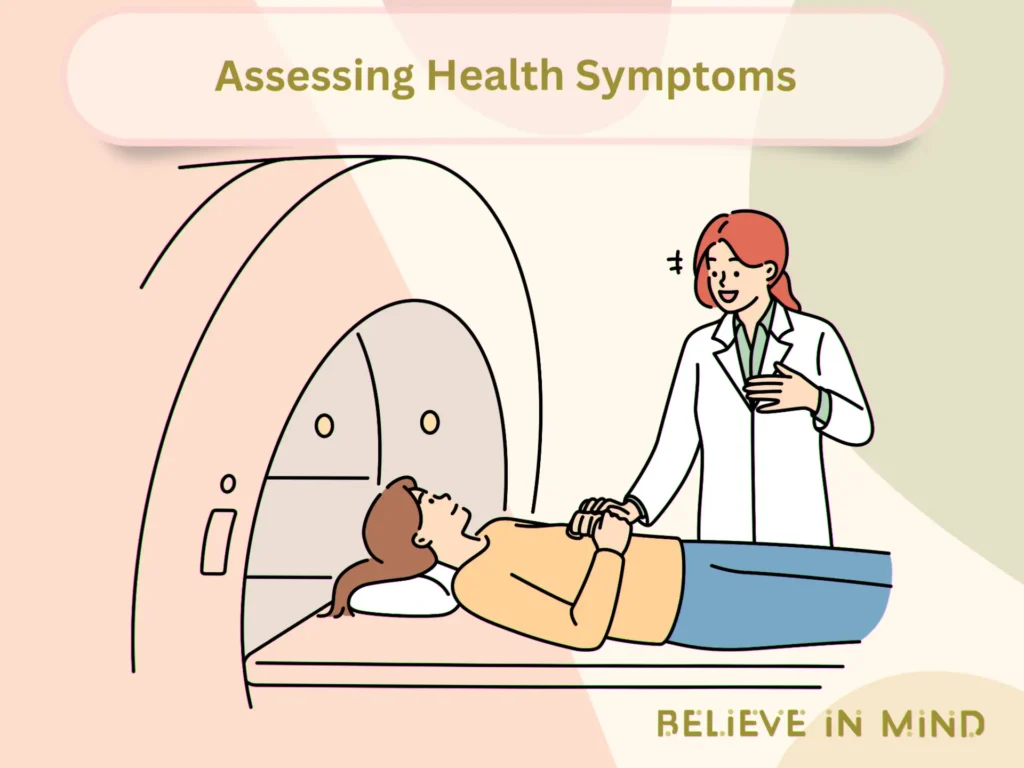Ever wonder why some people seem to navigate life’s challenges and obstacles with such ease? Chances are, they’ve mastered the art of thinking analytically. Unlike regular thinking, which’s often reactionary or emotional, analytical thinking involves logically evaluating information to solve complex problems. The good news is that analytical thinking is a skill you can develop and strengthen. By exposing yourself to real-world examples, you can enhance your ability to think critically in any situation.
Whether you’re troubleshooting technical issues at work, improving your health and fitness routine, or helping your kids solve problems, analytical thinking comes in handy. Read on for 10 examples of applying analytical thinking skills in everyday life. With practice, these techniques will become second nature and help you better navigate whatever life throws your way.
Table of Contents
What is Analytical Thinking?
What exactly is analytical thinking? It’s the ability to logically break down a problem into parts to gain insights and find solutions. It involves evaluating information in a systematic, logical manner. Analytical thinking skills are useful in just about any life situation.
Some examples of using analytical thinking in everyday life include:
- Solving complex problems at work. Whether it’s determining how to improve productivity or reduce costs, analytical thinking helps you evaluate options and impacts to find the optimal solution. You identify the root cause of the problem, look at it from multiple angles, and determine the pros and cons of different approaches.
- Making important life decisions. When deciding on a career path, buying a home, or any other big life choice, analytical thinking is key. You consider your priorities and options, determine the criteria that really matter, evaluate how each choice fulfills those, and make a logical decision that you can feel good about.
- Improving your health and finances. Want to establish an effective workout routine or budget? Analytical thinking comes to the rescue. Review your current situation and goals, explore various options that could work, determine what’s realistic and sustainable, make an informed plan, evaluate progress, and make adjustments as needed.
- Helping others solve their problems. Strong analytical thinking skills allow you to look objectively at other people’s issues, ask insightful questions, identify underlying causes, and determine constructive solutions and advice. You can provide logical guidance to help them address problems in an effective way.
Analytical thinking is a skill that gets stronger with practice. Look for opportunities in your daily life to logically analyze information and situations to make good judgments and decisions. With regular use, analytical thinking can become second nature.
Why Analytical Thinking Matters in Real Life
Analytical thinking skills are vital in nearly every area of life. Whether you’re solving problems at work, managing finances, improving health, or strengthening relationships, the ability to analyze information objectively and make well-reasoned decisions is key.
Work and career
If you want to advance in your career, strong analytical abilities are essential. Identifying and evaluating options, anticipating obstacles, and developing innovative solutions to complex problems are highly valued skills that often lead to promotions and higher pay. Bosses and managers especially rely on analytical thinking to make strategic decisions and improve performance.
Health and Wellness
When it comes to your health, the ability to analyze symptoms, evaluate treatment options, and make prudent lifestyle changes can have life-changing effects. Researching the pros and cons of different diets, exercise programs, medications, or medical procedures empowers you to choose what’s right for your own wellbeing. Tracking health metrics over time also allows you to make data-driven tweaks to optimize your routines.
Financial Management.
Managing money wisely requires the ability to review income, spending, investments, and long-term financial goals objectively. Monitoring budgets, evaluating fees and interest rates, diversifying investments, and rebalancing as needed are a few examples of applying analytical thinking to personal finance. Making prudent financial decisions and avoiding emotion-driven choices leads to greater financial security and freedom.
In all areas of life, analytical thinking skills translate to better outcomes. While not always the most exciting or spontaneous way of operating, embracing an analytical mindset and learning to evaluate situations objectively will serve you well for years to come. The rewards of wise, well-reasoned decision-making are worth the effort.
Analytical Thinking Examples in Real Life
Analytical thinking is the ability to break down complex problems into smaller parts and find logical solutions. It is a valuable skill in many fields and situations, such as business, science, education, and everyday life. Here are some examples of analytical thinking in real life:
Analytical Thinking Example #1: Evaluating a Major Purchase

When making a major purchase, analytical thinking skills come in handy. Evaluating options objectively and logically can help ensure you get the best value for your money. Let’s look at an example.
Say you’re in the market for a new laptop. There are many factors to consider:
Performance
- Processor: Faster is better for multitasking, but do you need top-of-the-line? For basic tasks, an Intel i5 or AMD Ryzen 5 would likely suit your needs.
- Memory: More RAM means faster loading of programs and better performance. For most people, 8–16 gigabytes is a good range.
- Storage: A solid-state drive (SSD) is faster than a hard disk drive (HDD). Aim for at least 256 gigabytes of storage for your operating system and main programs. You can add external storage if needed.
Display
- Screen size: 13 to 15 inches is typical for a laptop. Consider how much portability you need.
- Resolution: 1920 x 1080 pixels or higher will make graphics, images, and text appear sharp.
- Touchscreen: Only useful if you want a tablet-like experience for scrolling and zooming. It reduces battery life.
Price
- Set a maximum budget and stick to it.
- Look for sales and discounts to get the best deal.
- Consider a refurbished or last year’s model to save money. Performance differences are often minor.
Reviews
* Check reviews from sources like CNET, PCWorld, and Wirecutter to determine the best options in your price range based on performance, build quality, battery life, and other key factors. • Look for models with mostly positive reviews and high ratings.
By evaluating your needs and wants objectively, assessing the pros and cons of different specs and features, comparing prices, and considering expert reviews, you can make a well-informed choice. The result will be a laptop that suits your requirements and budget perfectly. Analytical thinking pays off!
Analytical Thinking Example #2: Planning a Trip Itinerary

Planning a trip itinerary requires tapping into your analytical thinking skills. Where do you want to go? How will you get there? What will you do once you arrive? Answering these questions thoroughly will ensure you have an amazing vacation.
Determine your destination.
First, decide where you want to visit. Do some research on locations that interest you and match what you’re looking for in a trip. Factors to consider include:
- Climate and weather during your travel dates
- Available attractions and activities
Cost of travel and expenses
- Travel requirements (visas, vaccines, etc.)
Once you’ve analyzed the options and settled on a top choice, you’re ready to move on to transportation and accommodations.
Figure out how to get there.
Will you travel by plane, train, bus, or car? Compare the pros and cons of each mode of transport for your particular destination. For example, while driving may be more flexible, flying could save you a lot of time. Review schedules and fares to determine what works with your timeline and budget. Don’t forget to account for ground transportation once you arrive.
Find a place to stay.
You’ll need somewhere to rest your head at night! Browse hotels, motels, hostels, and rental sites for the best deals. Consider amenities, location, reviews, and room types for your needs. For a longer trip, an apartment or vacation rental may give you more space and the comforts of home. Wherever you choose, be sure to book in advance for the best rates and availability.
Fill out your itinerary.
Now for the fun part—scheduling your activities! Check local event listings and attraction hours to map out each day. Leave some open time for exploring, or, in case of changes, your itinerary should strike a balance between scheduled events and downtime. Review any tickets or passes needed and purchase them ahead of your trip.
With some analytical thinking, you’ll have an amazing, well-planned trip itinerary in no time.
Bon voyage! Let the adventure begin!
Analytical Thinking Example #3: Assessing Health Symptoms

Analyzing your health symptoms logically and objectively can help determine if it’s something minor you can manage at home or if you need to see a doctor. Some key things to consider include:
Duration and progression
Pay attention to how long symptoms have lasted and whether they’re getting worse, improving, or staying the same. For example, a headache that’s lasted for a few hours is usually not serious, but one that’s lasted for days could indicate an issue that needs treatment. Similarly, a cough that’s producing darker phlegm over time may need evaluation. Track your symptoms to spot important changes.
Severity
Consider how bad or disruptive the symptoms feel. Mild discomfort is usually not alarming, but severe or intense pain often warrants medical care, especially if it’s limiting your activities or sleep. For example, a minor sore throat can usually be managed with home remedies, but trouble swallowing or breathing requires prompt evaluation.
Associated symptoms
Note any other symptoms occurring at the same time. Multiple symptoms together can point to an underlying condition that needs diagnosis and treatment. For example, a fever along with a sore throat can indicate an infection like streptococci that needs antibiotics. Chest pain, along with shortness of breath or nausea, needs emergency care.
Risk factors
Certain conditions, like diabetes, heart disease, or a weakened immune system, can influence how you experience and handle symptoms. If you have an ongoing medical issue or are over 65 years of age, new or worsening symptoms often need a more prompt medical evaluation. It’s best to call your doctor right away if anything concerns you or seems out of the ordinary based on your medical history.
Analyzing health symptoms in a systematic, logical way helps determine the best course of action. Paying attention to key factors like duration, severity, associated symptoms, and medical risk factors can help you spot when self-care may suffice or when a doctor’s visit may be needed for an accurate diagnosis and treatment. If anything about your symptoms worries or confuses you, don’t hesitate to contact your physician. It’s always better to be safe in matters of health.
Analytical Thinking Example #4: Solving a Workplace Challenge

A common challenge in many workplaces is inefficient processes that waste time and resources. As an analytical thinker, you can help identify and solve these types of problems.
For example, say your team has a weekly meeting to review the status of ongoing projects. However, these meetings frequently run over the scheduled time and lack clear outcomes or next steps.
Analyze the root cause.
The first step is to determine the underlying issues causing the inefficient meetings. Some possibilities could be:
- Lack of an agenda to keep discussions on track
- There is no defined purpose or goal for the meetings.
- Key stakeholders are not present to make decisions.
- Too many discussions and not enough problem-solving
Develop possible solutions.
Once you’ve identified potential issues, brainstorm solutions.
- Create a timed agenda before each meeting and circulate it to attendees. This provides focus and ensures important topics are covered.
- Clarify the purpose of the meetings, for example, to solve critical blockers, gain alignment, and delegate key next steps. Share this purpose with all team members.
- Ensure key decision-makers attend or provide input before the meeting. Or, schedule separate discussions with them to resolve questions, then share outcomes with the wider group.
- Limit open-ended discussions by requiring attendees to bring specific problems or questions to be addressed. Discourage tangents.
- Set a time limit, such as 30-45 minutes, to encourage efficiency. Stop meetings when the time is up, and schedule any remaining items for the next meeting.
Implement and review
Select one or two of the most promising solutions to test. For example, create an agenda and set a strict time limit. Ask for feedback after a few meetings to see if improvements were made. You may need to tweak or try alternative solutions. With regular analysis and follow-through, you can turn inefficient meetings into productive collaboration sessions.
The key is approaching workplace challenges with an analytical mindset. Observe processes objectively, evaluate root causes, develop practical solutions, implement promising options, and review the results, making changes as needed. With practice, you’ll get better at spotting and solving productivity problems across teams and organizations.
Analytical Thinking Example #5: Making Financial Investments

Making smart investments is a key way to put your analytical thinking skills to work in real life. One of the best ways to invest your money for the long run is in the stock market. However, successfully picking stocks requires researching companies, analyzing their financials, and determining which companies are poised for growth. This is no easy feat and requires patience, critical thinking, and problem-solving abilities.
To invest in stocks, open a brokerage account with an online broker like E*Trade or TD Ameritrade. Once your account is funded, you can start researching companies to potentially invest in. Some things to consider when analyzing a company’s stock:
- How has the company’s revenue and earnings growth been over the past few years? Consistent growth is a good sign.
- Does the company have a sustainable competitive advantage? Things like brand power, proprietary technology, or high switching costs for customers can signal an advantage.
- What is the company’s business model and market opportunity? Invest in companies with a clear path to growth and strong leadership in a growing industry.
- Review the company’s key financial ratios, like the price-to-earnings (P/E) ratio, return on equity (ROE), and debt-to-equity (D/E) ratio. Favorable ratios indicate the stock may be undervalued.
- Follow trends in the overall stock market and industry. Sometimes a rising tide lifts all boats, so a strong sector or market can positively impact companies within it.
Once you find some promising stock candidates, compare them to determine which are the best investments based on your financial goals and risk tolerance. Then, you can purchase shares of the companies you select and monitor how your investments perform over time, making adjustments as needed. With practice, your analytical and critical thinking abilities will improve, allowing you to make wiser stock picks and build wealth through investing.
Tips to Improve Your Analytical Thinking Skills
To sharpen your analytical thinking skills, try incorporating these tips into your daily life:
Practice asking probing questions.
Always ask “why” and get to the root cause of problems or situations. Ask open-ended questions to gather more details and gain different perspectives. Some examples include:
- Why do you think this is happening?
- What are some possible explanations for this?
- How did you reach that conclusion?
The more you question, the more analytical you will become.
Look at situations from multiple angles.
Try to view problems, ideas, or situations from different sides instead of taking things at face value. Put yourself in others’ shoes and consider their viewpoints to gain a well-rounded understanding. Some ways to do this include:
- Discuss issues with people who have opposing views.
- Play the devil’s advocate, even if you agree with the popular opinion.
- Look at problems from different angles by re-framing them in various ways.
Seeing all sides of an issue will make you a better critical thinker.
Evaluate the evidence and arguments objectively.
Analyze information rationally and logically instead of making emotional judgments. Look for holes, flaws, biases, or a lack of evidence in arguments and claims. Some things to consider include:
- Who is making the argument or claim, and what is their expertise or bias?
- Is there factual evidence from reputable sources to back it up?
- Are there any logical fallacies, like ad hominem attacks, strawmen, or false dilemmas?
- Are alternative explanations or interpretations being overlooked?
The ability to reason objectively is the hallmark of strong analytical thinking.
Solve open-ended problems.
Practice problem-solving by doing crossword or Sudoku puzzles, playing strategy games, participating in case studies, or taking on challenging work projects. Tackle real-world problems that have more than one possible solution. This helps build analytical skills through:
- Identifying problems
- Evaluating options
- Planning solutions
- Troubleshooting obstacles
With regular practice, your problem-solving abilities will become second nature.
Conclusion
So there you have it, folks. Some practical ways to flex your analytical thinking muscles in everyday life. Next time you’re stuck in traffic, cooking dinner, or even just brushing your teeth, look for opportunities to think logically and systematically through problems. Start with observing details, asking good questions, evaluating information objectively, and exploring alternative solutions. The more you practice, the more analytical you’ll become. Before you know it, you’ll be tackling life’s challenges with a sharper, more strategic mindset. So keep at it; your problem-solving skills will thank you!
References
- Analytical thinking & Reasoning: Real-life Examples by Ajitesh Kumar
- Analytical Thinking vs. Critical Thinking (Plus Jobs That Use Them) by Indeed
- What Are Analytical Skills? Definition, Examples and Tips by indeed

Let’s boost your self-growth with Believe in Mind.
Interested in self-reflection tips, learning hacks, and knowing ways to calm down your mind? We offer you the best content which you have been looking for.

